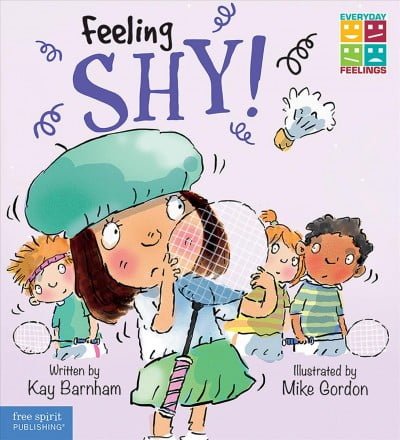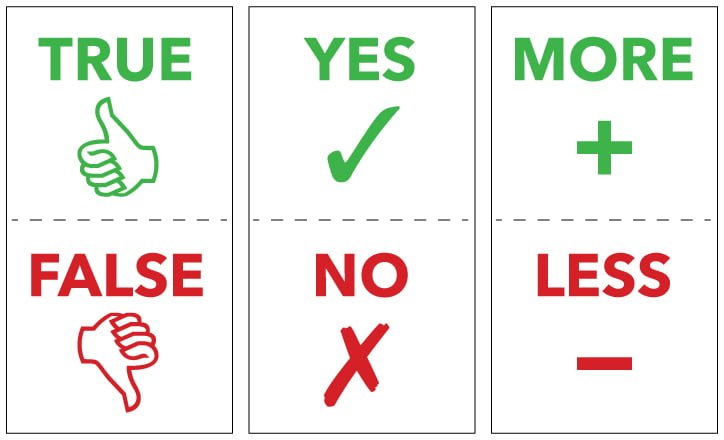Participates in Group Activities
What does “Participates in Group Activities” mean?
This skill is about a child contributing to a large-group activity, such as when the teacher reads a story to the whole class during Read Aloud time. A child that shows this skill is able to engage in the activity and joins in when the group is asked to do something. For example, when the teacher is reading to the whole class and asks a question about the book, a child who participates raises their hand and offers an answer to the question. When children take part in group activities, they learn from others and help others learn. This skill is important because it shows that a child is developing confidence in large-group settings.
What does this skill look like?

At Home
At dinner, Marta and her siblings are asked by their dad to take turns talking about what happened at school that day. When it is Marta’s turn, she tells her family about her day and is excited to let them know that she got picked to be the line leader for the week.

In The Classroom
During Read Aloud time, Ms. Taylor reads a book to the whole class about a family on vacation. After finishing the book, she asks the students if they have ever been on a trip with their family. Nicholas raises his hand, and after being called on, he tells the class about his family’s trip to the beach.
 Children can see the value of “Participates in Group Activities” in the book:
Children can see the value of “Participates in Group Activities” in the book:
Feeling Shy!
For more information about this book and other books that highlight this skill, visit our READING LIST page.
TIPS FOR FAMILIES
How can I explain this skill to my child?
Let your child know that everyone has a voice and deserves to be heard. Tell them that sometimes when you are around a lot of people, your voice can get lost. It can be hard or scary to speak up when there are so many other voices. Let your child know that if they don’t participate, no one will hear their voice and all the important things they have to say. Remind your child that their voice matters!
What are some things I can do to help my child learn this skill?

Build confidence. A key part of participating in group activities is confidence. One way to help your child build confidence is by giving them chances to be a leader at home. Here are some ways to support your child’s confidence and encourage them to become a leader:
- Give your child the chance to speak for themselves in large groups or when talking to new people. For example, when ordering food, give your child some options of what they can get to eat and then explain how they will order their food. It can be tempting to just speak for your child in these situations, but try to look for times when your child can speak up and gain confidence.
- Play games with your child in which they can be the leader. For example, you could play Follow the Leader or Simon Says and let your child be the one to give you instructions.
- You can play imaginative games with your child where they are the leader. For example, you can play “school” and allow your child to be the teacher while you play the student.
- Give your child simple responsibilities at home. For example, assign your child the role of “light monitor,” which makes them responsible for checking that the lights in the home are turned off before leaving for the day. You can also give your child tasks to manage while doing errands. For example, at the grocery store, tell your child, “Pick out five green apples and put them into this bag.”

Find opportunities for your child to practice participating in group activities. Give your child opportunities to join in large group conversations. For example, if the family is eating a meal together, ask each person to share what they had the most fun doing that day or what they are going to do later that day. After each person shares their thoughts, you can make a positive comment such as, “It sounds like you had fun during art time. I like painting too!” This helps to show that you respect your child’s voice and value what they have to say.
How can I encourage my child when I see them trying to learn this skill?
Acknowledge your child for their efforts! For example, tell your child, “Nicholas, aren’t you proud of yourself for speaking to the waitress and ordering your dinner on your own?” or “Marta, it was great that you shared with us about your day at school!” Click here for more ideas on how to encourage your child.
To download a printable PDF of the tips for this skill, click here.
TIPS FOR TEACHERS
How can I explain this skill to children?
Let children know that everyone has a voice and deserves to be heard. Sometimes when you are around a lot of people, your voice can get lost. It can be hard or scary to speak up when there are so many other voices. But if you don’t participate, no one will hear your voice and all the important things you have to say. Remind children that their voice matters!
What are some examples of best practices from educational experts and fellow teachers?

Crafting Confidence. A key component of participating in group activities is confidence. One way to help children build confidence is by creating leadership opportunities in the classroom. Here are some ways to bolster confidence and encourage children to become leaders:
- Assign children to be the leader of the group in cooperative games like Follow the Leader or Simon Says. It can be especially helpful to give children who seem less confident in a group setting these leadership roles. You can start by being a “co-leader” with them in the game until they feel confident doing it alone.
- Give children simple responsibilities in the classroom. For example, assign children to roles like:
- Classroom librarian, who keeps classroom books organized
- Classroom greeter, who says hi to everyone in the morning
- Cheerleader, who encourages others
- Light monitor, who turns the lights off when the class leaves the room
- Messenger, who collects and distributes papers to the class
- Acknowledge children that normally don’t participate during large-group activities when they do join in. For example, if there is an activity where children are supposed to clap to the beat of a song and a child who normally does not participate is clapping, let them know you saw their efforts after the activity is over. Allowing children to participate in large groups at their own pace and acknowledging when they join in, helps them build confidence.
- As group size grows, so do the number of personalities, potential interactions, and contributions. You can help children learn how to be confident in group activities by giving them opportunities to work in pairs, small groups, and larger groups. Providing opportunities to participate in groups of smaller sizes allows children to build confidence before testing them out with larger groups. Remember to be thoughtful about how you group children. For instance, pair less confident children with children who are nurturing or are leaders in the classroom, but make sure more confident children do not dominate activities. Let them know that part of their job as a leader in the classroom is to encourage their peers to participate and make sure others have a chance to speak.

Structured opportunities for low-pressure participation. To encourage children to participate, provide several structured opportunities to join in during large-group activities. It is especially helpful to provide low-pressure opportunities to join in. For example, doing something along with the whole class creates less pressure than doing something on your own in front of everyone. Examples of low-pressure opportunities to participate include:
- Choral Responding. Before Read Aloud begins, tell the class that as you read, you will ask them all questions and you want them all to respond together, just like a chorus.
- Hand Signals. Allow children to use hand signals as a way to participate. Instead of having to raise their hand and talk in front of the whole class, hand signals allow children to communicate without words. For example, you could tell the class that holding up one finger means you agree with what someone else said. Remember to first teach and model these hand signals for the class. You can also post a chart, like the one below, to remind children of the meaning of different signals.
 | I AGREE! |
 | CAN YOU REPEAT THAT? |
 | I LIKED THAT A LOT! |
- Response Cards. You can create simple response cards, like the ones below, with set answers to common questions you might ask. During large-group activities, give each child a set of response cards. Let the class know that whenever you ask a question they should hold up whichever card they think has the best response.
Click here to DOWNLOAD response cards.
How can I encourage children when I see them trying to learn this skill?
Acknowledge children for their efforts! For example, say, “Nicholas, aren’t you proud of yourself for raising your hand and telling the class your story?” or “Marta, it was great that you spoke up and shared that with the whole class!” Click here for more ideas on how to encourage children.
To download a printable PDF of the tips for this skill, click here.

Start your morning with Conquering Kindergarten!
Hey teachers, want to incorporate Conquering Kindergarten into your community meeting each morning? Go to the district’s Community Meeting App to find ready-to-use slides highlighting this skill. Filter content in the app by Conquering Kindergarten or by a specific skill to get access to interactive and engaging slides tailored to the community meeting format.
To learn more about the tips and where they came from, please visit our references page.

 Children can see the value of “Participates in Group Activities” in the book:
Children can see the value of “Participates in Group Activities” in the book: